
Welcome to the Tesla Memorial Society of New York Website
Ivan Mestrovic - The greatest sculptor since the Renaissance and sculptor of the Tesla Bust
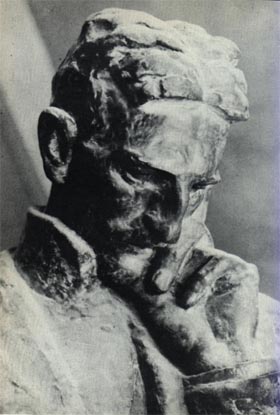
The internationally renowned Croatian sculptor Ivan Mestrovic made a bust of Nikola Tesla in 1939. He met Tesla in New York City in 1924 and they became good friends and admirers of each other. In the Museum of Nikola Tesla in Belgrade, there are letters of correspondence between Tesla and Mestrovic, which depicted their friendship and admiration for one another.
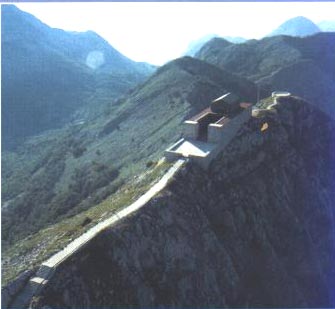
Mausoleum of the greatest poet of South Slavs, Peter Petrovic-Njegos in the Montenegrin Mountain of Lovcen, near the capital of Montenegro, Cetinje

Tesla Sculpture by the famous sculptor Ivan Mestrovic at Rudjer Boskovic Institute in Zagreb, Croatia
In 1939, Tesla sent a telegraph to Mestrovic in Zagreb, Croatia expressing his desire for Mestrovic to create a bust of Tesla. The original plaster model is on exhibition at the Croatian Academy of Art and Science in Zagreb and a bronze replica is displayed in the Technical Museum in Vienna and in the Museum of Nikola Tesla in Belgrade, Yugoslavia.
The Tesla Memorial Society of New York would like to place Mestrovic's bust of Nikola Tesla at the Rathaus, Munich, Germany where the "Tesla Unit" was officially proclaimed by the International Electrotechnical Commission-Committee of Action.
Mestrovic made a bust of the great Serbian-American scientist and professor of Columbia University in New York City, Michael Idvorsky Pupin. There are two busts made by Mestrovic of Pupin in New York City. One bust is placed by the Cathedral of "St. Sava" in Manhattan. The second Mestrovic Pupin bust is located in the Library of Pupin Physics Laboratory at Columbia University, New York City. The Columbia Pupin bust bear the inscription: "To my friend, Michael Pupin from Mestrovic".
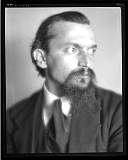
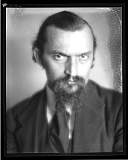
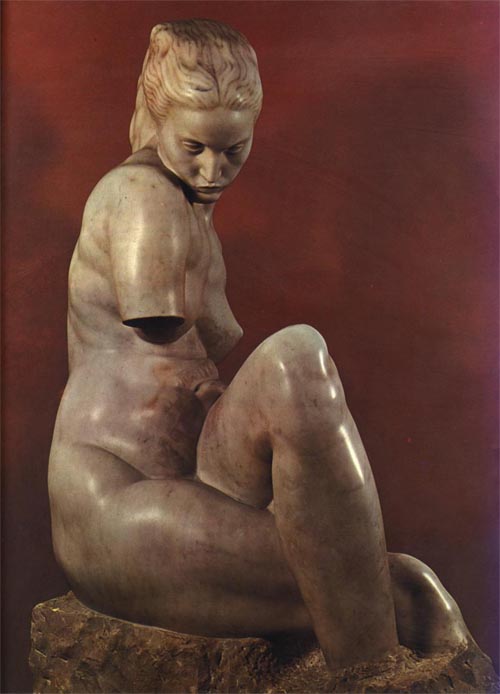
Ivan Mestrovic was born in 1883 in Vrpolje, Dalmacia, Croatia. He lived in a time of unexpected changes. He created many famous sculptors through the time of the Russian Revolution, the Balkan War, World War One and World War Two. He participated in over 150 exhibitions. He learned carving from a master stone-cutter named Pavle Bilinic in Split, Croatia, 1899. Split is town rich with vestiges of Greek and Roman culture and Mestrovic spent his spare time copying ancient works of art. At age 17, he went to Vienna Academy. At the international Exhibition in Rome in 1911 he won great international recognition.
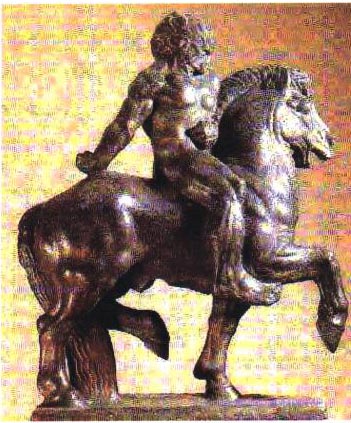
Serbian hero Marko Kraljevic
Mestrovic worked chiefly in marble, wood, and bronze. Much of his sculpture was strongly influenced by Greek classical styles. Religious and patriotic themes dominate Mestrovic's art. His major works include the marble sculpture Maiden of Kosovo (1917) and Pieta (1942-1946). Many of Mestrovic's sculptures are of biblical scenes. Other works include the equestrian statue of the Serbian hero Marko Kraljevic, sculptures commemorating the battle of Kosovo, a war memorial in Canada, and two Indian equestrian statues in Chicago.
In 1904 Mestrovic married Ruza Klein, one of fourteen children of a poor Jewish merchant. Mestrovic completed his studies at the Vienna Academy in 1905. In an exhibit show in Zagreb, the Austrian emperor purchased the sculpture "Mother and Child".
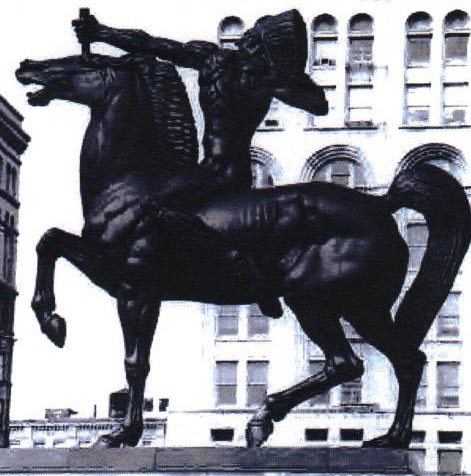
Indian with a Bow. Bronze, 1926-1927. Grant Park in Chicago
During the first months of 1911, Mestrovic and his wife were living in Belgrade, capital of the Kingdom of Serbia. They later moved to Rome which was at time the international meeting point of artists and intellectuals.
Mestrovic's exhibits stimulated concepts of Slavic music, lectures on southern Slavic history, literature and architecture better than anybody else in history. Mestrovic did more to revive the spirit of the Kosovo Battle and Kosovo heroes in his modeling and carving than Goethe did when he translated the Ballad "Hosanaginica" into German. The Kosovo Battle in 1389 is a symbolic historical event testifying to the heroic Serbian fighters against Turkish invaders.
The climax of Mestrovic exhibits took place at the Petit Palais in Paris in 1919 at the time of the Versailles Peace Conference which broke up the Austro-Hungary Empire and formed Yugoslavia.
The spectacular turning point in Mestrovic's career was the international exhibit in Rome in 1911. He won the first place award for sculpture; critics called him the "greatest sculptor since the Renaissance". The heroes that fought the Turks in the famous Kosovo battle in 1389 came to life again in bronze and stone. He presented them to the European public as symbols of the patriotic aspiration and striving of the southern Slavs towards freedom and independence -- this time from the Austro- Hungarian Monarchy . On the eve of World War I, Mestrovic was fighting with his chisel for the future destiny of his people. His voice was heard all over the world thanks to his artistic success. During WWI (1914-1918) he was a leader in the movement to create the nation of Yugoslavia. Two Croatian political leaders, Ante Trumbic and Frano Supilo, with Mestrovic to support them with his reputation conceived a Yugoslavian Committee of National Liberation to fight for a Yugoslavian union.
The National-Socialist regime in Germany had noticed the monumental and powerful form of Mestrovic's art. Mestrovic was invited to exhibit in Berlin in the middle 1930s. Hitler himself intended to open the exhibit if Mestrovic would be there for the occasion. Mestrovic declined.
As the war progressed Mestrovic refused to collaborate with the puppet government of Croatia and he was imprisoned into ill-famed Savska Cesta prison in Croatia, near Zargeb. After months of negotiations by friends through the Vatican, Mestrovic was released and left for Venice, where his works were exhibited at the Bienale. Ruza Mestrovic (his wife) died in 1942 in Zagreb and 30 members of her family were killed in the Holocaust.
Marshal Tito's government urged Mestrovic to return to the new Yugoslavia after WWII. Tito himself came to offer the artist personal freedom and material wealth. Mestrovic refused.
He came to he United States in 1946 and taught at Syracuse and Notre Dame universities. In the spring of 1946 he was invited by the Academy of Arts and Letters and Mestrovic mounted a memorable show at the Metropolitan Museum in New York City. In 1954, he became a citizen of the Untied States of America at a ceremony conducted by President Eisenhower at the White House. He died in 1962. Mestrovic's remains were brought from the United States to Croatia and are presently in Mausoleum "Ivan Mestrovic", in Otavice, Drnis, Croatia.
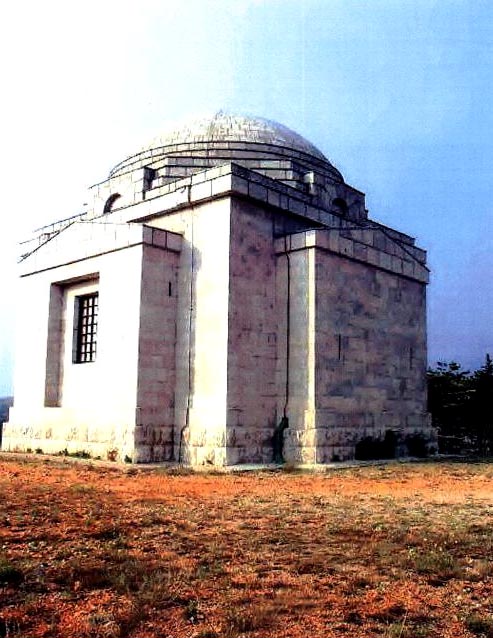
Mausoleum "Ivan Mestrovic", in Otavice, Drnis, Croatia.
Mestrovic is the great figure in the history of the people of the Balkans. He designed the Grand "Monument of the Unknown Soldier" at the Mount of Avala, near Belgrade, Yugoslavia, and the Mausoleum of the greatest poet of South Slavs, Peter Petrovic-Njegos in the Montenegrin Mountain of Lovcen, near the capital of Montenegro, Cetinje. Both monuments are unsurpassed by their beauty and inspiration. He also designed "The Monument of Gratitude to France" in Kalimegdan Park, Belgrade. "The Well of Life" in Zagreb was also one of his masterpieces.
The people of the Balkans are grateful to "the greatest sculptor since the Renaissance", Ivan Mestrovic.